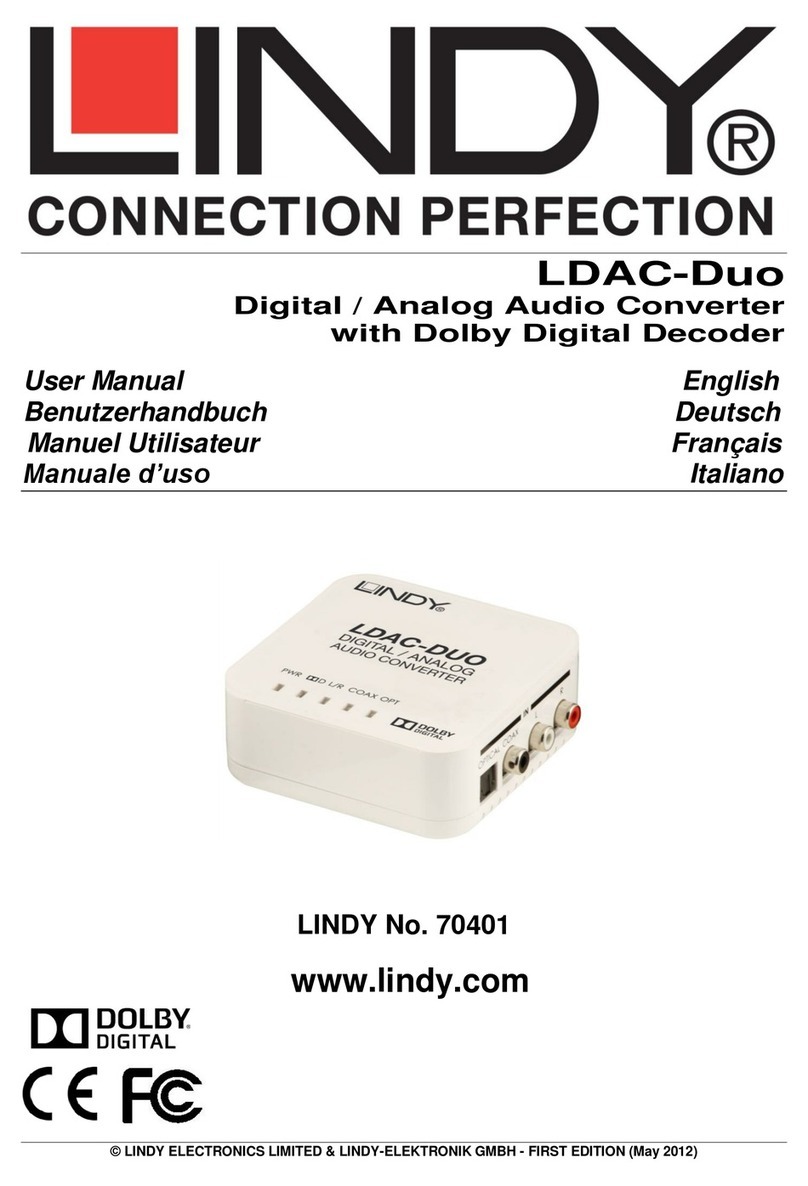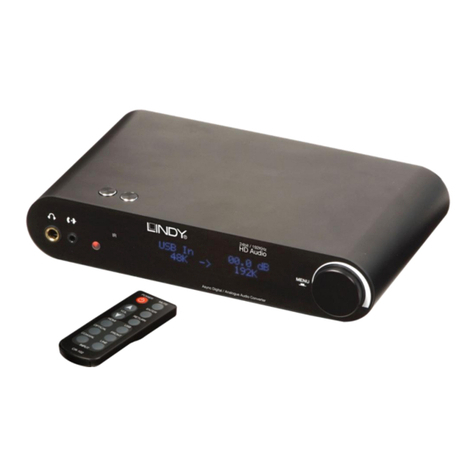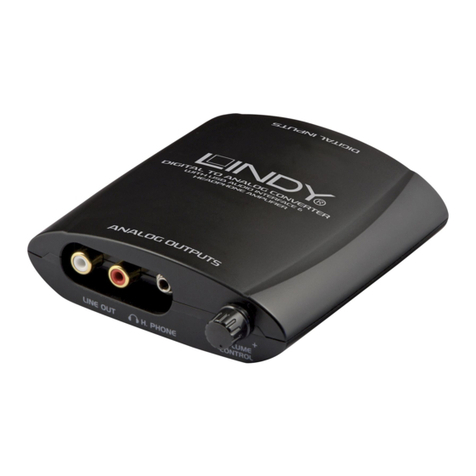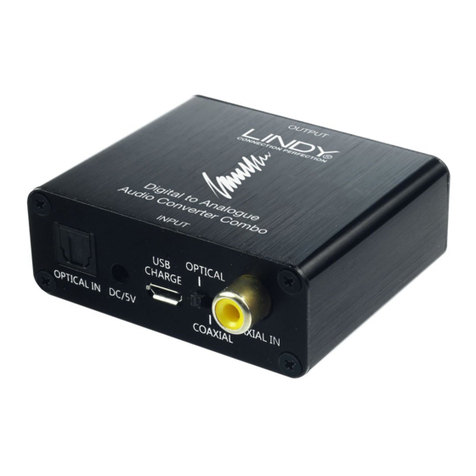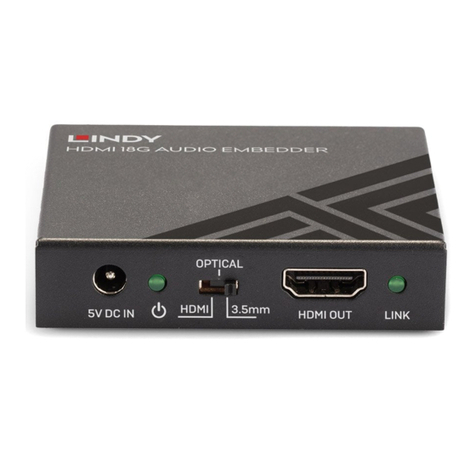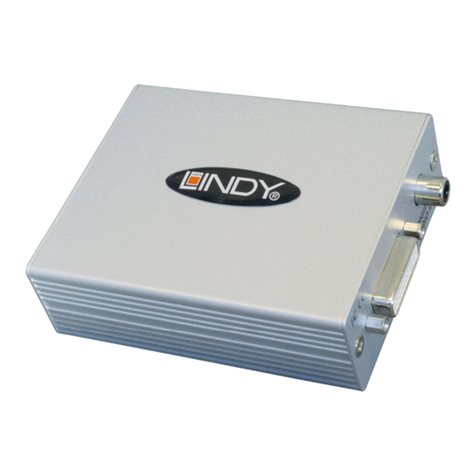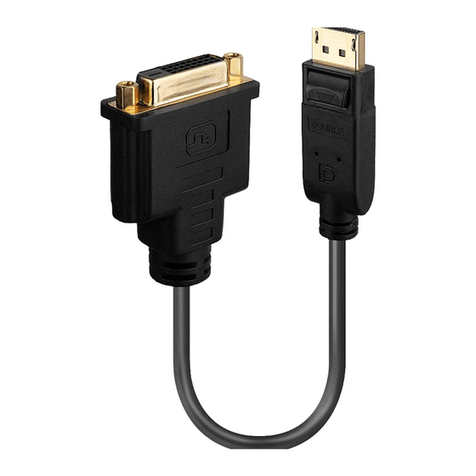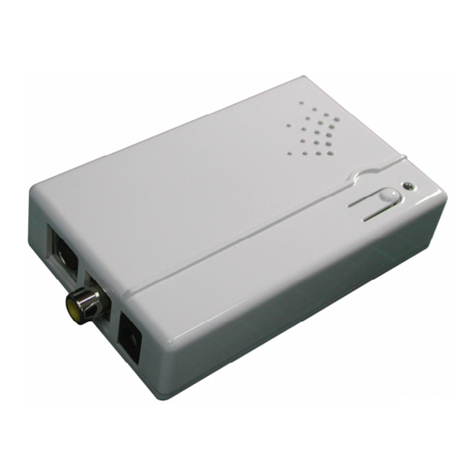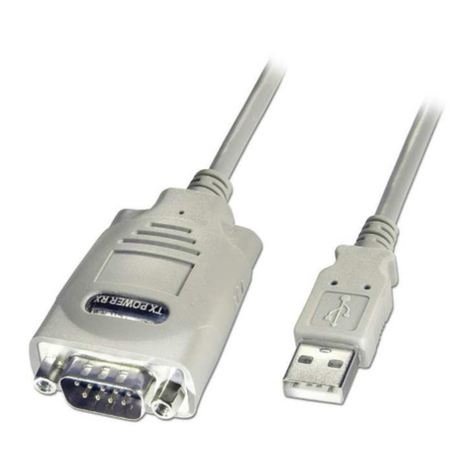
Technical and legal information, Certifications
Technical Data
Dimensions (cm, approximately) 7 x 5.5 x 2 (WxDxH)
Weight (approximately) 44 g (Converter) / 90 g with packaging
Operating Temperature 0°C ~ 40°C / 32°F ~ 104°F
Storage Temperature -20°C ~ 60°C / -4°F ~ 140°F
Relative Humidity 20 ~ 90% RH, Non-condensing, For Indoor use only
Power Consumption (Max) 2.5W(Max), USB powered 5VDC regulated
Shielded cables must be used with this equipment to maintain compliance with radio
frequency energy emission regulations and ensure a suitably high level of immunity to
electromagnetic disturbances.
CE Certification
This equipment complies with the requirements relating to electromagnetic compatibility.
It has been manufactured under the scope of RoHS compliance.
FCC Warning
This equipment has been tested and found to comply with the limits for a Class B digital
device, pursuant to part 15 of the FCC Rules. Operation is subject to the following two
conditions:
1. This device may not cause harmful interference, and
2. This device must accept any interference received, including interference that may
cause undesired
WEEE (Waste of Electrical and Electronic Equipment),
Recycling of Electronic Products
Europe, United Kingdom
In 2006 the European Union introduced regulations (WEEE) for the collection and recycling of all
waste electrical and electronic equipment. It is no longer allowa le to simply throw away electrical
and electronic equipment. Instead, these products must enter the recycling process.
Each individual EU mem er state has implemented the WEEE regulations into national law in slightly
different ways. Please follow your national law when you want to dispose of any electrical or
electronic products. More details can e o tained from your national WEEE recycling agency.
Germany / Deutsc land Rückna me Elektrosc rott und Batterie-Entsorgung
Die Europäische Union hat mit der WEEE Direktive Regelungen für die Verschrottung und das
Recycling von Elektro- und Elektronikprodukten geschaffen. Diese wurden im Elektro- und
Elektronikgerätegesetz – ElektroG in deutsches Recht umgesetzt. Das Entsorgen von Elektro- und
Elektronikgeräten ü er die Hausmülltonne ist ver oten! Diese Geräte müssen den Sammel- und
Rückga esystemen zugeführt werden! Dort werden sie kostenlos entgegen genommen. Die Kosten
für den weiteren Recyclingprozess ü ernehmen die Gerätehersteller.
LINDY ietet deutschen Endver rauchern ein kostenloses Rücknahmesystem an. Ausführliche
Informationen zu diesen Themen finden Sie stets aktuell auf der LINDY We seite im Fuß ereich.
France
En 2006, l'union Européenne a introduit la nouvelle réglementation (DEEE) pour le recyclage de tout
équipement électrique et électronique.
Chaque Etat mem re de l’ Union Européenne a mis en application la nouvelle réglementation DEEE
de manières légèrement différentes. Veuillez suivre le décret d’application correspondant à
l’élimination des déchets électriques ou électroniques de votre pays.
Italy
Nel 2006 l’unione europea ha introdotto regolamentazioni (WEEE) per la raccolta e il riciclo di
apparecchi elettrici ed elettronici. Non è più consentito semplicemente gettare queste
apparecchiature, devono essere riciclate. Ogni stato mem ro dell’ EU ha tramutato le direttive WEEE
in leggi statali in varie misure. Fare riferimento alle leggi del proprio Stato quando si dispone di un
apparecchio elettrico o elettronico.
Per ulteriori dettagli fare riferimento alla direttiva WEEE sul riciclaggio del proprio Stato.
LINDY No. 32544
© LINDY GROUP - First Edition - August 2016
Manuel Utilisateur
Manuale d’uso
Merci d’avoir choisi le convertisseur VGA vers TV, avec une
garantie de 2 ans et un support technique.
Livraison
•Convertisseur LINDY VGA vers TV
•Câble d’alimentation USB A/Micro-B
•Ce manuel
Caractéristiques
•Met à l’échelle (scale) et convertit automatiquement de VGA vers
NTSC, PAL.
•Sélecteur NTSC / PAL
•Résolutions VGA supportées:
640x480 @60Hz, 800x600 @60/75Hz, 1024x768 @60/75Hz,
1280x720 @60Hz, 1280x768 60/75Hz, 1280x1024 @60/75Hz,
1360x768 @60Hz, 1400x1050 @60Hz, 1440x900 @60Hz,
1680x1050 @60Hz, 1600x1200 @60Hz
•Résolution vidéo composite, en sortie: 480i (NTSC) / 576i (PAL)
NOTE: ne paramétrez pas votre résolution VGA supérieure à
1024x768. La résolution du signal doit être diminuée en NTSC/PAL,
ce qui signifie toujours une grande perte de qualité car la vidéo
composite ne supporte aucune haute résolution!
Installation
•Positionnez le sélecteur NTSC/PAL dans la bonne position (en
Europe, la majorité est en PAL, et aux USA en NTSC).
•Connectez votre source VGA à l’entrée VGA avec un câble VGA.
•Connectez la sortie jaune vidéo composite RCA à votre TV ou à
un autre appareil avec entrée vidéo composite.
•Connectez le signal audio de la source à l’entrée Jack 3,5mm
stéréo et les 2 sorties RCA rouge/blanche à l’entrée audio de votre
TV.
•Le convertisseur VGA vers TV peut être alimenté via l’interface
VGA si le signal de la source est suffisamment puissante. Nous
vous conseillons d’alimenter le convertisseur via le câble USB
A/micro B fourni ou via une alimentation USB.
Résolutions de problèmes
Si vous rencontrez des problèmes, merci de vous assurer que le
convertisseur est bien alimenté via le câble USB, et que tous les
câbles sont correctement connectés. Commutez le sélecteur
NTSC/PAL sur l’autre position.
Si vous rencontrez des problèmes de qualité d’image, reportez-vous à
la NOTE indiquée ci-dessus.
En cas de problème, vous pouvez contacter notre support technique.
Votre équipe LINDY
Vi ringraziamo per aver acquistato il Convertitore VGA a TV LINDY.
Questo prodotto è stato progettato per offrivi la massima affidabilità
e semplicità di utilizzo e beneficia di 2 anni di garanzia LINDY e
supporto tecnico gratuito a vita. Per assicurarvi un corretto utilizzo
del prodotto vi preghiamo di leggere attentamente questo manuale e
conservarlo per future consultazioni. Questo convertitore VGA a TV
trasforma un segnale VGA con risoluzioni da 640x480 a 1600x1200
in un segnale Video Composito NTSC o PAL interlacciati.
Contenuto della Confezione
•Convertitore VGA a TV LINDY
•Cavo di alimentazione USB A/Micro-B
•Questo manuale
Caratteristiche
•Scala e converte automaticamente segnali VGA in NTSC, PAL.
•Selettore NTSC / PAL
•Risoluzioni VGA supportate:
640x480 @60fps, 800x600 @60/75fps, 1024x768 @60/75fps,
1280x720 @60fps, 1280x768 60/75fps, 1280x1024 @60/75fps,
1360x768 @60fps, 1400x1050 @60fps, 1440x900 @60fps,
1680x1050 @60fps, 1600x1200 @60fps
•Risoluzione in uscita: 480i (NTSC) or 576i (PAL)
NOTA: Vi preghiamo di impostare se possibile la risoluzione VGA ad
un massimo di 1024x768. Il segnale dovrà essere riscalato alla
risoluzione NTSC/PAL facendo scendere drasticamente la qualità
dell’immagine ed è quindi inutile partire con una risoluzione troppo
elevata che il formato NTSC/PAL non può gestire.
Installazione
•Commutate il selettore NTSC/PAL sull’impostazione corretta (in
Europa normalmente PAL mentre in USA NTSC).
•Collegate semplicemente la porta VGA input alla sorgente video
utilizzando un cavo VGA con tutti i poli collegati.
•Collegate la porta Video Composito (RCA giallo) alla vostra TV o
Video.
•E’ possibile anche collegare il canale audio della vostra sorgente
alla porta Jack 3.5mm Stereo del convertitore e il vostro TV o
altro dispositivo Audio/Video alle porte RCA bianca e rossa
•Il convertitore VGA a TV può essere alimentato dalla porta VGA
della sorgente ma nel caso questa non fornisca abbastanza
alimentazione è possibile fornire corrente aggiuntiva con il cavo
USB fornito in dotazione. In generale noi consigliamo di
collegare sempre il Cavo USB fornito ad una porta USB della
sorgente o ad un alimentatore USB per garantire continuità di
funzionamento del dispositivo.
Risoluzione dei Problemi
Nel caso riscontriate problemi assicuratevi che il convertitore sia
alimentato anche tramite la porta USB e verificate che tutti i cavi
siano collegati correttamente. Provate anche a commutare il
selettore NTSC/PAL sull’altra posizione.
Se riscontrate problemi di qualità fate riferimento alla NOTA nella
sezione Caratteristiche. Se non riuscite a risolvere il problema
contattate il supporto tecnico LINDY per richiedere assistenza.
Tested to comply with
FCC Standards.
For Home and Office Use

